2017 "SUPERZOO - NATIONAL SHOW FOR RETAILERS" SPECIAL

Since 2003, Animal Radio has been showcasing the latest toys, gadgets and technology available for your pet. Our 2017 SUPERZOO SPECIAL is no different. We will be featuring the latest gadgets as well as cutting-edge technology for your pets. And the best part? We have giveaways for you!
This week's pick is the Clever Pet dog puzzle. This incredible toy will keep your best friend busy and stimulate his noggin'.
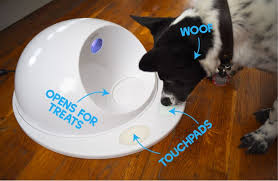 CleverPet
CleverPet
CleverPet is the only automatic feeder that plays like a toy. The CleverPet Hub is like a game console that your dog (or cat!) can use. Designed by neuroscientists who love animals, CleverPet is an entirely new way to engage your pet's mind with puzzles that stay challenging. While feeders give out kibble by the dozens, and puzzle toys will only hold a few treats at a time, the CleverPet Hub instead lets you provide continuous engagement for hours and hours every day. Every dog is different, and two aspects of their personality in particular will have a big impact on how quickly they start using the Hub. Check out their website for videos to help train your dog.
Visit Website
Could Your Pet's Food Give Them Cancer?
Jackie Bowen, Clean Label Project
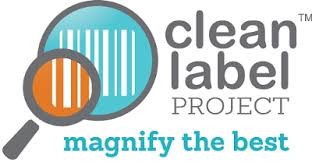 Many pet owners have had a similar experience: a beloved pet is diagnosed with cancer and veterinarians aren't able to determine the cause. Though there has been significant research relating toxins to a number of cancers in humans, our canine and kitty counterparts have not had that same luxury.
Many pet owners have had a similar experience: a beloved pet is diagnosed with cancer and veterinarians aren't able to determine the cause. Though there has been significant research relating toxins to a number of cancers in humans, our canine and kitty counterparts have not had that same luxury.
A recent pet food study released by Clean Label Project, a nonprofit that reports toxicity testing on consumer products for consumer awareness, revealed staggering amounts of heavy metals, BPA/BPS, pesticides and other dangerous toxins in dog and cat food products across the industry. They do that by using data and science to help see past all of the marketing and all of the different claims on packaging and are able to evaluate products based on what's inside.
What they found in our pet's food was cadmium (active component in battery acid - found in over 94-percent of the pet food); pesticides (chemicals used to kill insects, weeds or fungus); arsenic (once known as the active ingredient in rat poison - found in over 75-percent of the pet food); lead (leaches from lead water pipes - found in over 82-percent of the pet food); BPA (commonly found in plastic water bottles); mercury (highly concentrated in swordfish, shark and tuna); chromium (included in cigarettes and cigarette smoke); nickel (makes up 25-percent of US 5-cent); and acrylamide (used in sewage water treatment). Some of these concentrations were literally 555-percent higher than the maximum contaminant levels that are set by the EPA for drinking water.
Marketing departments do such an effective job at selling pet families and consumers the feeling of comfort and security when buying their food. But in actuality, many brands fail to deliver on their promise. So he Clean Label Project went out and literally purchased over 1,000 of America's best selling dry and wet dog foods, as well as cat foods along with treats. They tested them for over 130 different environmental and industrial contaminant and toxins. These included things like heavy metals, antibiotic residues, pesticide residues and plasticizers. The results they found were really shocking. They literally saw lead results that were 16 times the concentration of those seen in the Flint, Michigan drinking water crisis.
So why isn't this being regulated? The FDA is ultimately responsible for regulating the pet food industry but, as we know, the FDA has their hands full when it comes to human foods and keeping that safe. So unfortunately when it comes to pet food, it is secondary on the list.
Jackie Bowen tells us over the past several years we have seen this increased almost humanization of pet food. You see claims like "Human Grade," "Grain-Free," "Natural," and "Feed Them Like Family." So for the Clean Label Project, it was especially interesting to see what the truth actually was behind all of these claims.
One thing they found when they tested the new claims of "grain-free" pet food they had higher levels of toxins than those with grains. The Clean Label Project knows they need to do more work to identify the root cause analysis. So if a pet food happens to be grain-free, does it have a higher concentration of protein? Is it really the different protein sources that are contributing to these higher levels of toxic metals?
One thing they do know is that when you are testing over 1,000 products, you end up with 130,000 data points. However, it was extremely clear that out of all of the different protein, fish by far had the highest amount of toxins. This is believed because you always hear, "Don't eat too much sushi and don't eat too much tuna," because they contain types of heavy metals like mercury and lead and have tendency for bioaccumulation.
 So what does this mean for our animals? Jackie tells us you need to put this into perspective. We are talking about animals that weigh a fraction of what we do and they eat the same food everyday, 2 to 3 times a day. Think about that overall toxic load they are eating! This has to affect their health and long-term wellness. Unfortunately there is not a lot of research out there about how companion animals get cancer. We do know that there is a direct correlation between the toxins that were found in pet food and human consumption. The toxins that they found were linked to a whole host of adverse health issues like cancer, kidney damage in both humans and laboratory animals. With this in mind, they can definitely see where there is a correlation that this long-term chronic exposure to toxic metals can have adverse health affects on our companion animals.
So what does this mean for our animals? Jackie tells us you need to put this into perspective. We are talking about animals that weigh a fraction of what we do and they eat the same food everyday, 2 to 3 times a day. Think about that overall toxic load they are eating! This has to affect their health and long-term wellness. Unfortunately there is not a lot of research out there about how companion animals get cancer. We do know that there is a direct correlation between the toxins that were found in pet food and human consumption. The toxins that they found were linked to a whole host of adverse health issues like cancer, kidney damage in both humans and laboratory animals. With this in mind, they can definitely see where there is a correlation that this long-term chronic exposure to toxic metals can have adverse health affects on our companion animals.
But beyond cancer in our pets, heavy metal exposure causes a whole host of different systemic symptoms that we may not even realize could be going on. These could be things like diarrhea, vomiting, not eating well, being lethargic, neurological disruptions and seizures. There are so many systems that can be affected, which makes it is hard for a veterinarian to identify and say to an owner that their pet has lead or arsenic poisoning. However, if they did testing for levels of these compounds, they might be able to prove it.
Our own Dr. Debbie tells us of how her dog get better when she took her off of a rice-based diet. This made her think, because of all we know about arsenic and rice and the risk to people, that maybe perhaps this was not a food sensitivity but some kind of toxic exposure that her dog was having.
We do know that out of the various amount of investigative work that the FDA has done on different types of commodity crops, that there was a big study done on arsenic specifically in rice. One of the very few maximum tolerant levels that the FDA had released is the maximum amount of arsenic and lead that goes into infant rice cereal. Unfortunately there are a whole host of other products that use rice, so this study needs to be expanded.
The Clean Label Project tested over 1,000 products from over 90 brands and the results are publicly available at cleanlabelproject.org/petfood. The worst products they tested were those that had fish, which had a higher tendency to contain the highest amount of toxic metals. Turkey was on the opposite end, with the cleanest source.
If your pet has been diagnosed with cancer, the Clean Label Project wants to hear from you for a new survey and study that they are doing, called the Pet Cancer Registry. They have all of this information about the true content of these pet food products and now what they want to know are the anecdotal stories from all of the pet families that have been adversely affected that have had to deal with different types of cancers and illnesses with their pets. They want to see if they can find any type of correlation and systemic relationships between the brands of pet food and the incidents of cancer, both using the information from pet parents as well as their own analytical chemistry data.
Clean Label Project hopes to get as many participants as possible and encourages everyone who has had a dog or cat diagnosed with cancer in the last 10 years to participate in this important survey. There is an option to submit multiple submissions if one owner has had multiple animals with cancer diagnoses. The survey can be found at cleanlabelproject.org/cancer.
Visit Website
Win a BrilliantPad Self Cleaning Dog Potty
Alan Cook, Brilliant Pet
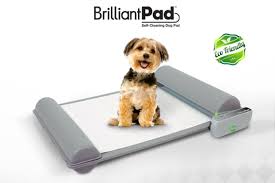 We're giving away a dozen BrilliantPad systems this week. If you have a dog that weighs less than 25 pounds, you could easily win a BrilliantPad Self Cleaning Dog Potty just by calling in. The catch? You have to report back how much you love it.
We're giving away a dozen BrilliantPad systems this week. If you have a dog that weighs less than 25 pounds, you could easily win a BrilliantPad Self Cleaning Dog Potty just by calling in. The catch? You have to report back how much you love it.
BrilliantPad, created by Alan Cook at Brilliant Pet, is something that is truly unique as there has never been anything like this before. BrilliantPad is the world's first automatic self-cleaning dog potty for small dogs less than 25 pounds. We love our little dogs but not the mess they leave behind!
More small dogs use puppy pads than ever before. And guess what? They don't clean themselves! So you're left with pickling up the messy, smelly pads and disposing of them and who likes that!
At Brilliant Pet, they are experts at making pet waste easier to handle and easier to dispose. They knew that had to do something to help with dog waste and that is why they created BrilliantPad. The BrilliantPad does all the dirty work for you by replacing a dirty pad with a clean fresh pad so you never have to handle or smell a stinky, soiled pad ever again. Regular pads just don't do that.
BrilliantPad to your dog is like a regular pad. It is a platform that is a couple of inches off the ground, so even the smallest dogs can step on to it easily. They can then do their business (pee or poop) and the machine will handle it all. When your pet is done, the machine wraps and seals the waste so your home stays clean and odor free.
The BrilliantPad pads are super durable and super absorbent. They are able to soak up all of the liquids and dry out the solids. And because the waste is dried out and sealed, it can be stored in the BrilliantPad without any smell.
The BrilliantPad is both automated and adjustable. This allows people to advance the pad when they want to at the touch of a button. Or you can set a timer so the system advances one, two or three times a day. So whatever situation is right for you, you are in complete control and can decide when it replaces the pad.
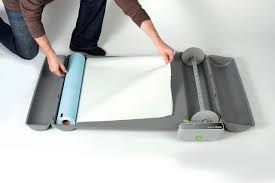 Brilliant Pet applied their expertise for developing automatic cat litter systems to come up with a motor that is durable, powerful and reliable, yet very quiet so it won't spook your dog.
Brilliant Pet applied their expertise for developing automatic cat litter systems to come up with a motor that is durable, powerful and reliable, yet very quiet so it won't spook your dog.
Some dogs will get very nervous when something new is brought into the house or with something that has sounds. Some dogs are afraid of thunder and lightning and maybe even the sounds of the dishwasher or washing machine. The BrilliantPad is even quieter than other things you may have in your home. So even the most timid dogs can successfully use BrilliantPad.
We want to give away 12 units to our listeners. But the catch is that you need to report back on a regular basis on things such as how the training is going, how your small dog is taking to it, how you and your dog like it, etc.
Just remember, dogs require some training to adopt new behavior. However, it's no more difficult to teach a dog to use BrilliantPad than to use traditional pads. And if your dog is already using pads, getting them from using regular pad on the ground to using the BrilliantPad is really easy and straightforward. Typically you just take the pad they are already using, or whatever they are familiar with, and you place it on top of the BrilliantPad. Then after they start using their old pad, which is now on top of the BrilliantPad, just fold it in half and make it smaller. You then progressively reduce its size until they go directly on the BrilliantPad.
Visit Website
How to NOT Train a Dog - Dr. Debbie
 The other day I was walking my dog in a community area and encountered a lady with two Shih Tzu's. As we approached, her dogs rallied with barking and tugging on their leashes. I asked if her dogs were friendly, so as to decide if we could approach. The lady scowled, embraced her still barking dogs and grumbled, "Do they look like they're friendly?"
The other day I was walking my dog in a community area and encountered a lady with two Shih Tzu's. As we approached, her dogs rallied with barking and tugging on their leashes. I asked if her dogs were friendly, so as to decide if we could approach. The lady scowled, embraced her still barking dogs and grumbled, "Do they look like they're friendly?"
Realizing this dog owner was more unsociable than her dogs, I decided to vamoose, but not before I envisioned this blog topic- how pet owners mold unsocial dog behavior.
Unwanted doggie behavior such as lunging and barking on the leash become established when the dog owner hasn't made it clear what the appropriate behavior is, fails to correct and redirect to a more suitable behavior, or simply reinforces the undesirable behavior through actions or words. Face it- there aren't bad dogs, just poorly trained ones.
Avoid making these top 5 training mistakes:
Secluding Your Dog In The Back Yard
Keeping your dog in lock down almost guarantees problem behaviors will develop such as biting, inter-dog aggression and phobias to anything from noises to car travel. Isolated dogs lack the experience and confidence when faced with novel situations while socialized dogs adapt easily.
I see it all the time- the dog owner prides herself in keeping her dog safe. "I didn't want Fido to catch any diseases as a pup, so I didn't let him out of our backyard till he was a year old." The overwhelming fear of infectious diseases like parvovirus causes some well-meaning owners to confine their new dog or puppy to the limits of house and yard. Even more extreme is never allowing a puppy to step foot outside until after their last puppy vaccinations! Puppies are most adaptable to new experiences between 6 and 16 weeks- this is the time to expose them to unfamiliar places, people and animals.
That doesn't mean you should take your eight week old puppy to dog parks, but rather to use good sense selecting low dog traffic areas and visiting with family and friends outside of the home that have properly vaccinated pets.
Skipping Obedience Training
Going to school is a must for any new dog to a home, whether a puppy or adult. No two dogs are the same, and each learns differently. Formal obedience training is a useful tool to gently reaffirm who's in charge and sets the rules in the house. Statistics show that dogs that go through formal obedience training are less apt to develop behavior problems and be relinquished to shelters.
 Reinforcing Fear At The Veterinary Office
Reinforcing Fear At The Veterinary Office
In the exam room I cringe when I see a dog owner comforting a nervous, fearful or aggressive pet. That "good boy" and pat on the head reinforces your dog's behavior, making it more likely that on the next hospital visits he'll behave the same, or worse. Some problem behaviors escalate making it difficult for the veterinary staff to examine or treat the animal. This may mean additional costs for sedation or anesthesia for routine medical needs.
It's natural for a pet owner to want to reassure a pet when he is frightened and it can be difficult to hold back the urge to soothe him. However, the best strategy is to ignore those fearful behaviors in the vet office. Don't be tempted to kiss, snuggle or hold Fido on your lap when he is misbehaving. Rather, place the dog on the floor, refocus your dog's attention to you, and cue him to "sit" or "lie down".
Not Using Food As A Reward
Food shouldn't just be for the taking. Don't leave food out for your dog to graze whenever he wants and don't give treats just for the sake of giving a treat. Present food and treats as a reward for good behavior such as sitting quietly, going to a pillow, or performing a trick or obedience work. This places you at the top of the household hierarchy. You become the provider of great edibles in the house, and your dog will be motivated to listen to your requests in other situations.
We all love to spoil our dogs and give treats at times. But be sure to give treats for a reason, or you will have a spoiled doggie brat on your hands.
Not Exercising Your Pet Enough
Inadequate exercise can result in obesity and boredom, and may lead to problem behaviors like separation anxiety, destructive chewing and excessive barking. Dogs should get 30 to 60 minutes of sustained physical activity each day for optimum mental and physical benefit. And no- letting Buffy run around the backyard during the day is not adequate exercise.
Not all breeds are cut out for all exercise- a Labrador may enjoy retrieving games or swimming, a Jack Russell terrier may thrive with jogging or Frisbee, while a Basset hound will be satisfied with a leash walk.
Your dog can't be a well-adjusted, socialized canine citizen without you, as the pet owner, taking an active role in training. Put the time in, and you'll be thanked many times over with an outgoing, friendly canine pal that can accompany you on life's adventures.
Featured veterinarian known as "Dr. Debbie" on national pet radio program, Animal Radio. Ebook author of "Yorkshire Terriers: How to Be Your Dog's Best Friend"; "Pugs: How to Be Your Dog's Best Friend"; "Mini Schnauzers: How to Be Your Dog's Best Friend"; and "Shih Tzu: How to Be Your Dog's Best Friend."
Visit Website
Animal Radio News - Lori Brooks
 Our Pets Leave a Big Carbon 'Pawprint'
Our Pets Leave a Big Carbon 'Pawprint'
It's easy to see how things we do and things we rely on can create a huge carbon footprint. But a new study by a professor at UCLA reveals that our pets, cats and dogs, can leave a big carbon pawprint! Here is how it works. The professor calculated the meat-based food that 163 million American dogs and cats eat, and the waste those they produce, which generates the equivalent of about 64 million tons of carbon dioxide each year. He says that's as much as 13 million cars driving for a year. He also claims dogs and cats are responsible for roughly 25 to 30-percent of the environmental impact of meat consumption in the United States. The professor says he just wants pet owners to consider the climate impacts of pet ownership, especially as many pet parents switch their dogs and cats to high-protein premium foods. However, an animal science professor at UC Davis, who specializes in livestock emissions, agrees the study shows that pets clearly have a significant environmental footprint. But he said almost all of the meat pets consume in their food comes from rendered livestock byproducts, the stuff that meat processors would otherwise toss because people won't eat them, but yet they put it in your pet's food.
 "Real Housewife" Reported to Animal Control
"Real Housewife" Reported to Animal Control
Former Real Housewives' of Atlanta star Kim Zolciak-Biermann, who has her own reality show, has now taken to social media to call out whomever it was that called Animal Control to make a report that she doesn't take care of her dogs. Even if you are not a fan of the 'Don't Be Tardy' reality mom, you have to know what a die-hard animal advocate she is. She donates to rescues, fosters dogs and after her son was bitten by a dog, she made a point of getting him back into an animal loving groove by having him work with puppies. Kim often posts about her dogs and foster animals, but says after someone who doesn't even know her called animal control with a phony report about her, Kim says she will no longer post about her dogs on social media.
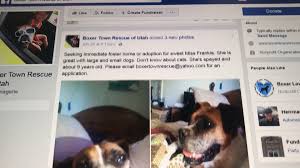 Dog Believed to Be Euthanized Found Available on Website
Dog Believed to Be Euthanized Found Available on Website
Can you even imagine finding out that a beloved pet you believed to be dead is actually alive? That's exactly what happened to the Coates family in Utah. Their boxer Zoey started having seizures last year when Mr. Coates took her to the vet to be put to sleep. Then Mrs. Coates went online to look for another boxer for her 11 year-old son, who had been very close to Zoey. That's when she stumbled onto a picture of Zoey saying she was in need of a foster home. As all the details begin to emerge, we find out that the vet had thought that when Mr. Coates dropped of Zoey at her office it "seemed obvious" that they didn't want the dog. However, Zoey "had years to live" and the vet didn't want to put Zoey down. The vet performed surgery on Zoey before contacting a rescue group in hopes of finding a new home for the dog. She admitted that she 'messed up' in not calling the family to ask if they wanted the animal back, but reiterated that they didn't seem to want the dog at all. Mr. Coates, who might have been able to straighten out the whole thing, had since been put in jail for robbing a bank. Thankfully Mrs. Coates and her son have been reunited with Zoey.
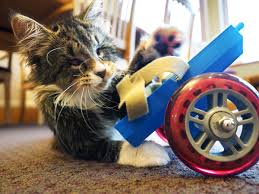 Students Build 3D-Printed Wheelchair for Blind Kitten
Students Build 3D-Printed Wheelchair for Blind Kitten
An inspirational group of 8th graders have designed a 3D-printed wheelchair for a blind kitten with a spinal condition. The kitten, whose name is Ray, was only 6 months old when he was adopted from a cat sanctuary in Massachusetts. Actually, the cat can feel his legs he just can't move them in the motion to walk. Being a kitten, Ray had no problem capturing the heart of his next-door neighbor who is an 8th grader teacher. She fell in love with Ray and coordinated with their town's Emerging Technology Department at the public library and the rest is history. Ray has a wheelchair that allows him to move around and play and the students have a great sense of accomplishment and now know that anything they set their minds to is possible.
 Michael Jackson's Chimp Paints for a Living
Michael Jackson's Chimp Paints for a Living
Do you remember Michael Jackson's pet chimp he used to carry around in the 80's? His name is Bubbles and now he is an artist who specializes in really abstract art and is pretty big on the Miami art scene. Bubbles went to live at the Center for Great Apes in Florida when he was 20. That was nearly 15 years ago. The sanctuary is home to almost 50 apes and the cost to care for each one is $22,000 a year, so Bubbles was recruited to paint for a fundraiser where his pictures were sold for $200 to $2,000. Painting is just one of many enrichment activities that chimps and orangutans at the center take part in, because it helps them recover from their time in captivity. Bubbles is among the oldest apes at the center and even though he loves to paint, his favorite activity is playing in tubs of water.
PetSmart Sues Martha Stewart
Martha Stewart is going to court for a trial in a breach of contract lawsuit filed against her by the company that sold her Martha Steward brand pet products at PetSmart. The two sides have been at war since their contracts with each other expired in 2013. The company claims Martha undermined them in product decisions and micromanaged everything, including production of the products, and deprived the company of "tens of millions of dollars" in potential profit.
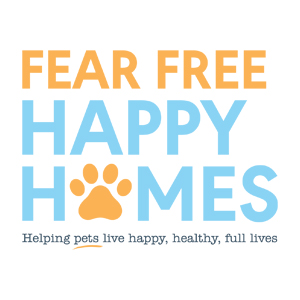
NEWS UPDATE brought to you by Fear Free. "Take the 'pet' out of 'petrified'" and get pets back for veterinary visits by promoting considerate approach and gentle control techniques used in calming environments.
 Listen to the entire Podcast of this show (#924)
Listen to the entire Podcast of this show (#924)




 CleverPet
CleverPet
 So what does this mean for our animals? Jackie tells us you need to put this into perspective. We are talking about animals that weigh a fraction of what we do and they eat the same food everyday, 2 to 3 times a day. Think about that overall toxic load they are eating! This has to affect their health and long-term wellness. Unfortunately there is not a lot of research out there about how companion animals get cancer. We do know that there is a direct correlation between the toxins that were found in pet food and human consumption. The toxins that they found were linked to a whole host of adverse health issues like cancer, kidney damage in both humans and laboratory animals. With this in mind, they can definitely see where there is a correlation that this long-term chronic exposure to toxic metals can have adverse health affects on our companion animals.
So what does this mean for our animals? Jackie tells us you need to put this into perspective. We are talking about animals that weigh a fraction of what we do and they eat the same food everyday, 2 to 3 times a day. Think about that overall toxic load they are eating! This has to affect their health and long-term wellness. Unfortunately there is not a lot of research out there about how companion animals get cancer. We do know that there is a direct correlation between the toxins that were found in pet food and human consumption. The toxins that they found were linked to a whole host of adverse health issues like cancer, kidney damage in both humans and laboratory animals. With this in mind, they can definitely see where there is a correlation that this long-term chronic exposure to toxic metals can have adverse health affects on our companion animals. We're giving away a dozen BrilliantPad systems this week. If you have a dog that weighs less than 25 pounds, you could easily win a BrilliantPad Self Cleaning Dog Potty just by calling in. The catch? You have to report back how much you love it.
We're giving away a dozen BrilliantPad systems this week. If you have a dog that weighs less than 25 pounds, you could easily win a BrilliantPad Self Cleaning Dog Potty just by calling in. The catch? You have to report back how much you love it. The other day I was walking my dog in a community area and encountered a lady with two Shih Tzu's. As we approached, her dogs rallied with barking and tugging on their leashes. I asked if her dogs were friendly, so as to decide if we could approach. The lady scowled, embraced her still barking dogs and grumbled, "Do they look like they're friendly?"
The other day I was walking my dog in a community area and encountered a lady with two Shih Tzu's. As we approached, her dogs rallied with barking and tugging on their leashes. I asked if her dogs were friendly, so as to decide if we could approach. The lady scowled, embraced her still barking dogs and grumbled, "Do they look like they're friendly?" Reinforcing Fear At The Veterinary Office
Reinforcing Fear At The Veterinary Office
 Our Pets Leave a Big Carbon 'Pawprint'
Our Pets Leave a Big Carbon 'Pawprint'
 Students Build 3D-Printed Wheelchair for Blind Kitten
Students Build 3D-Printed Wheelchair for Blind Kitten
 Michael Jackson's Chimp Paints for a Living
Michael Jackson's Chimp Paints for a Living
